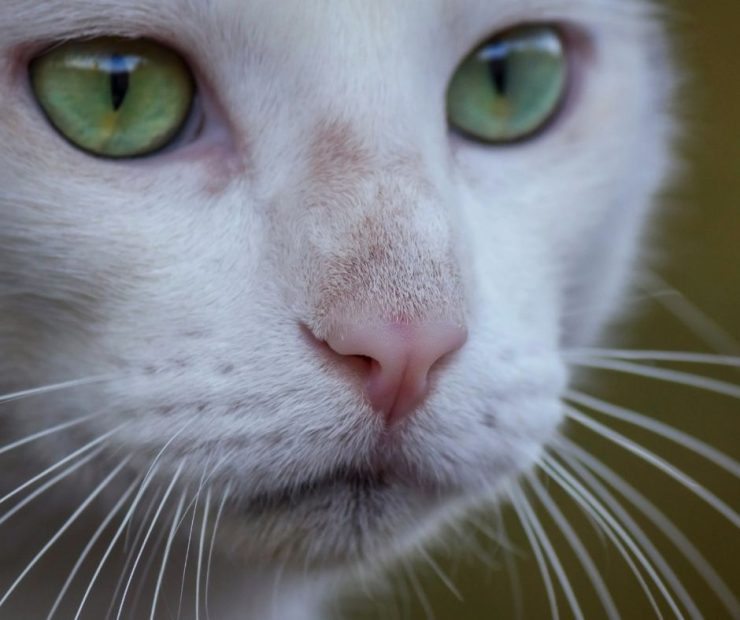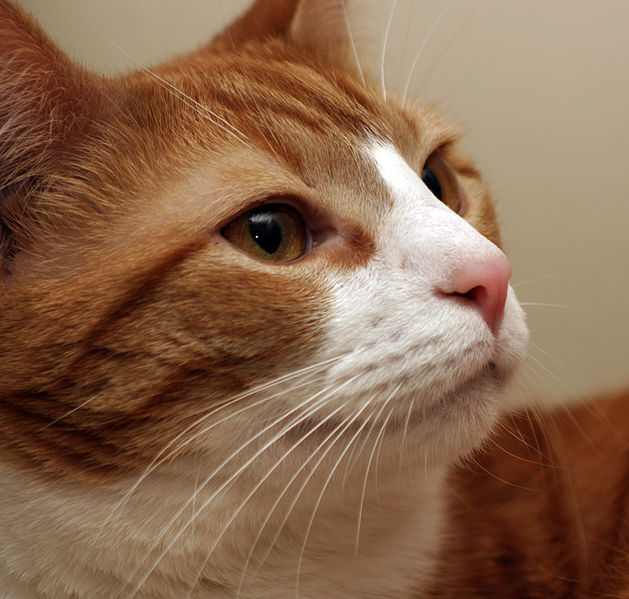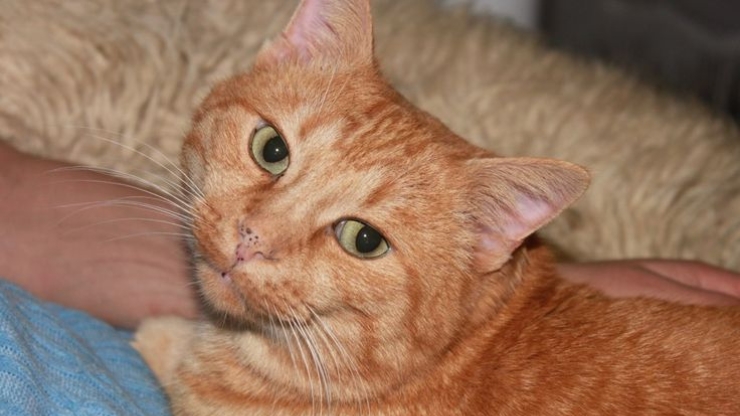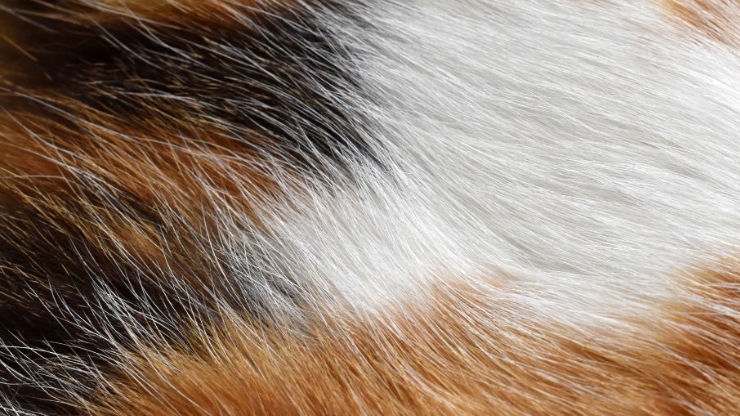Every once in a while, you may find a strange, long, white hair lying around. Upon further examination, you realize it is one of your cat’s whiskers. You are aware that your cat needs her whiskers. They are an important part of a cat’s equipment. If they fall out, could this be harmful?
- Whiskers Are Hair and They Grow Back
- How Long Does It Take For a Cat’s Whiskers To Grow Back
- Is It Painful For a Cat To Lose a Whisker?
- Is It OK To Touch A Cat’s Whiskers?
- Beware Of “Whisker Fatigue”
- How Many Whiskers Does A Cat Have
- Purpose and Features Of a Cat’s Whiskers
- Different Types Of Cat Whiskers
- What If My Cat’s Whiskers Are Falling Out?
And what if they are cut? Young children have been known to take a pair of scissors to a cat’s whiskers. They may think that those hairs on the kitty’s face are too long and she needs a trimming. Is this harmful? Even more important, does it hurt?

Whiskers are Hair and They Grow Back
The good news is that whiskers are hair. The whisker itself has no nerves or feelings. If you cut a whisker, it does not hurt. And, like any hair, it will grow back. Losing a few whiskers here and there is a part of a cat’s normal shedding process. They never lose more than a couple.
Cats occasionally shed their whiskers. One may fall out while your cat is rubbing their cheeks on some favorite object. When this happens it means the whisker was ready to go.
How Long Does It Take For a Cat’s Whiskers To Grow Back?
Cat whiskers grow slowly. It will take two or three months for a whisker to grow back and the total time will vary between cats, different breeds, and general state of health. It’s a slow process but it’s not a big deal for your cat to be missing one or two whiskers.
Is It Painful For a Cat To Lose a Whisker?
If a cat’s whisker is ready to naturally fall out on it’s own, then the cat will feel no pain when they lose the whisker. It is likely come out when they are rubbing against something.
Since the whisker itself is just normal hair, made of keratin just like the rest of your cat’s fur, it has no nerve endings within it. It’s basically made up of dead cells just like our hair. So cutting a cat’s whisker will not be painful to the cat. Since a cat needs it’s whiskers, of course, you should never cut them.
If, on the other hand, you pull out a cat’s whiskers, this will cause a great deal of pain for your cat!
Is It OK To Touch A Cat’s Whiskers?
Your cat’s whiskers are not just another type of hair. They are special and are attached to specialized nerve endings at their base that make them sensitive to vibration, air currents, or being touched.
Each is associated with up to 200 neurons and so is very sensitive to being stimulated, rubbed, or generally messed with. So, again, you pull out a cat’s whisker, it will hurt like the dickens!
The whisker hairs extend deeper into the skin than regular hairs, are surrounded by fibrous blood-filled capsules, and are connected to important sensory nerves. This makes them very sensitive, which explains why some cats may not like you to mess with their whiskers, especially if you try to stroke them “against the grain.”
There are some cats, though, that will enjoy a little whisker petting if you gently smooth the whiskers back against the face. Generally, it is best not to touch a cat’s whiskers excessively or to rub them vigorously. However, if your cat seems to enjoy the occasional and gentle whisker rub, it will not harm him. Just don’t do it constantly!
Beware of “Whisker Fatigue”
Excessive rubbing or pressure on the whiskers can cause ‘whisker overstimulation’ and lead to what veterinarians call “whisker fatigue.”
For this reason, make sure your cat has food and water bowls that are large enough to accommodate her whiskers so they do not rub or press against the sides of the bowl when eating or drinking. A larger bowl with sloping sides or even a small plate may be better.
If this is a problem, your cat may let you know by avoiding the food bowl or using their paw to scoop food onto the floor.
How Many Whiskers Does a Cat Have?
Trying to count your cat’s whiskers is a bit like herding cats, but a cat will have 20 to 30 whiskers in all. In fact, those whiskers on her face are not the only ones. See below for more about different kinds of cat whiskers.
Purpose And Features of A Cat’s Whiskers
Cats can detect the slightest air movement, and use their whiskers to judge their surrounding. Very useful when hunting through thick brush at night or navigating crowded environments with stealth.
You may have heard that a cat’s whiskers are as long as his body is wide. Well, this probably depends on how much you feed your cat, but in general, a cat can use his whiskers to judge if he can fit through an opening.
If the whiskers rub up against the sides of the opening, the cat knows he cannot fit. And, he will be able to detect even the slightest touch.

A cat’s whiskers are technically termed vibrissae. They can be controlled by your cat via various muscles called arrector pilae muscles. You have these muscles too. They make your hairs stand up when you have ‘goose pimples.’ However, our arrector pilae are not voluntary muscles. We cannot control them. A cat can, at least the ones that control her whiskers.
Cats can point their whiskers out, pull them in, etc. Generally, they will move them forward when greeting you or another cat, and backward when eating, feeling threatened, or fighting.
Different Types of Cat Whiskers
The long whiskers on your cat’s upper lip are called mystacials. Sounds a bit like mustache, doesn’t it? The shorter whiskers on the lower jaw are called mandibulars.
The whiskers further back on the cat’s upper cheek, or back behind the corner of her eyes, are called genals. Did you even notice these?
And, those little whiskers over her eyes, the ones that stick upwards, are called supercilliaries. See if you can spot all of these in the picture above.
But wait, there’s more!
Cats also have little tufts of whiskers growing from the back of each of their front legs. Look for these just above the “ankle” or carpal pad. Examining them is difficult, though, and you might get a little bite for your trouble.
The whiskers on your cat’s face come into play for all the reasons given above but are also useful when your cat captures prey. The facial whiskers help your cat deliver killing bits, and the whiskers on the back of the front legs help detect what the prey is doing by feeling the struggle and sensing escape attempts.
Despite how cuddly your cat may be, everything about her body is precision-designed for hunting.
What If My Cat’s Whiskers Are Falling Out?
If your cat’s whiskers are falling out in excessive numbers this could be the sign of an underlying medical condition that affects your cat’s skin or fur, so you need to consult your veterinarian
It is likely that you will see other signs such as loss of fur on other parts of the body. Skin infection, mange, and other skin conditions are possible.



